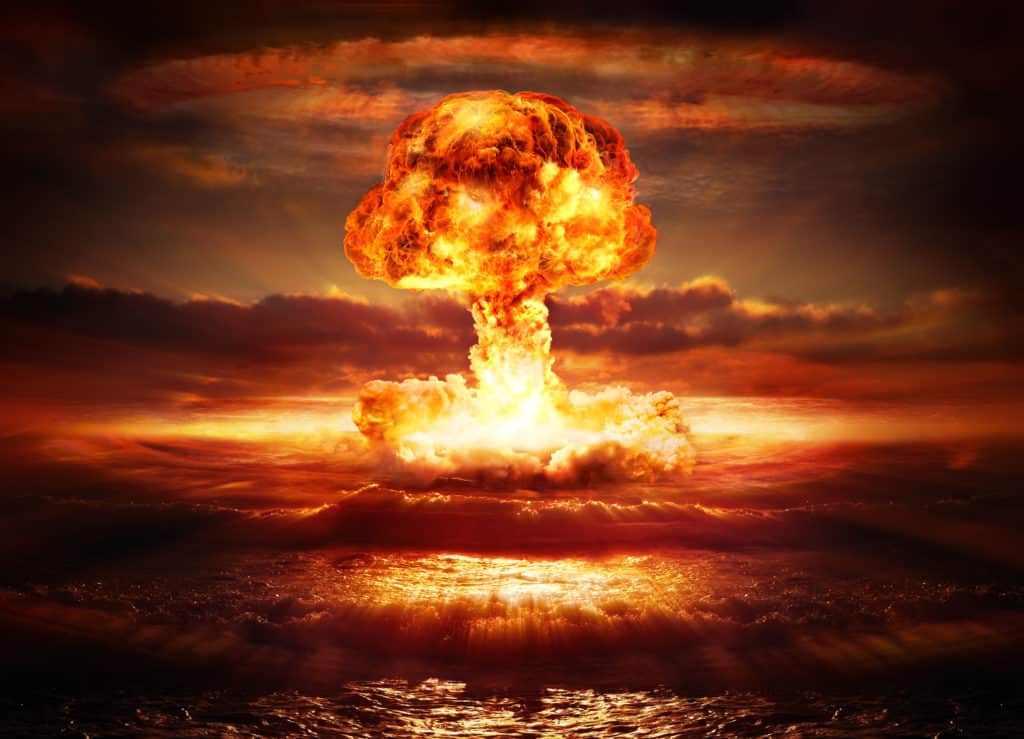
When I first heard the term dieseling in regards to airguns I was puzzled. What does diesel have to do with airguns and how is dieseling supposed to increase the power of my air rifle?
Dieseling is when the air pressure of firing a pellet causes lubricant behind the pellet to combust. The common myth is that it can reliably increase the power of your air rifle, but should you diesel your airgun? I do not, and would never suggest that you do either. But I’ve got my reasons. Don’t take my emphatic answer as reason enough though. Read on while I describe what exactly dieseling is, what it does to your performance, and what it can do to your airgun so you can come to your own conclusion.
What is the history of dieseling?
Why the term dieseling. It comes down to how a diesel engine works. Instead of using a spark like a combustion engine a diesel engine uses compression to pressure heat air causing a fuel to ignite.
NOTE: Before we go any further I do want to take a break to discuss three terms floating around the community. In the end, you can use these terms as you see fit, but I need you to understand how I think of them for this article to be 100% clear. They are:
- Dieseling: Technically, this is only the use of pressure to heat compressed air to cause ignition leading to detonation or combustion. The community commonly uses this term to describe the entire process from start to finish. This is human nature, and it’s a bit sloppy but accurate enough for most purposes. Getting into the technical details for every discussion with your buddies would just be irritating. I do it in this article as well to keep from overcomplicating it.
- Combustion: This occurs when oxygen combines with another fuel causing ignition and a release of energy. (This is what’s going on during dieseling.)
- Detonation: This occurs when a single substance receives enough energy to stimulate intramolecular breakdown.

(These definitions of combustion and detonation are courtesy of Stanford in this article titled… Detonation and Combustion. Feel free to debate with them about it. I’m not interested in that debate.)
What this means for the airgun community:
Some people think detonation is the big bang and combustion is the small bang. This isn’t true, but if they continue to think that it’s OK. As long as we understand a big bang is what we really want to avoid. For me, I’m going to keep referring to the whole mess as dieseling in this article.
Hey! Get back to talking about airguns.
Whew, that was a bit technical right? On to the real point of the article. What does all of that have to do with airguns?
First, understand the mechanisms for a springer airgun require small amounts of lubrication. When you cock a springer airgun you pull a piston back. Pulling the trigger releases the piston compressing and heating air behind a pellet. The compressed and heated air may at this point cause unintentional dieseling.
But wait, why would I say not to diesel when this is a common unintentional phenomenon? This kind of dieseling is understood and planned for by manufacturers. It has been studied since at least the 1970’s. There is another kind of dieseling though.
Intentional Dieseling
If dieseling occurs, and we understand it, can it be harnessed to make an airgun more powerful? I don’t know who started this trend, but the internet is full of myths and stories of successes and failures.
A commonly discussed form of dieseling involves putting a few drops of WD40 in the skirt of a pellet or placing a petroleum-based lubricant directly behind a pellet. When the gun is fired the lubricant combusts. A large bang is heard and, if the rumor is to be believed, the pellet achieves unmatched velocity.
There are countless youtube videos confirming or denying the ultimate effect of dieseling, but there are some major questions to be asked.
Why would anybody diesel their airgun?
This is a reasonable question. Let’s explore some of the myths.
Stopping Power
Some people state they want to diesel their airgun for improved stopping power. This doesn’t exactly compute to me. First, dieseling is usually performed on small caliber airguns. Small caliber airguns inherently do not have as much stopping power. That stopping power is caused by other aspects of the impact. The feet per second of the pellet has less to do with it than you think.
Anything .22 or smaller propelled at sufficient velocity is more likely to pierce. Even if your shot is lethal it is more likely to result in a slow death as we discuss in our coyote hunting article.
If you are looking for added stopping power to step up to the next level of game hunting another consideration is accuracy and reload. You better hope that first shot is spot on because the chances of correctly dieseling your next shot in time to get it off quickly are very low.
I’m accurate while dieseling
Speaking of accuracy some people claim to be quite accurate while performing this action, but I suspect that is usually at shorter ranges. If you are significantly changing the ballistics of your airgun you are possibly affecting the way it performs. When going for the accurate shots this is not a favorable situation to be putting yourself in.
Remember accuracy is more about grouping than an individual bullseye. Your group will not be as tight with dieseling. Speaking of accuracy, we’ve put together 20 tips to help you improve your accuracy.
Dieseling is fun
My educated guess is most people playing around with dieseling are doing it because they love experimenting and trying semi-risky things. Most likely this testing is being done in a plinking environment.
I get it for people that want to experiment. I love playing around with things, and combustion and explosions are always fascinating. Combine those with ballistics and you almost have me, but there are concerns we’ll discuss later which hold me back.
I’d rather set it up so any explosions are where the pellet impacts, not in my air rifle.
Is the increase reliable?
I hinted at this earlier when discussing the difficulty in dieseling while hunting. It’s a bit more than that though, and this is the reason myths float around the internet, along with people claiming they are 100% false. It’s not exciting or polarizing, but as you suspect the real answer is somewhere in the middle.
Can you increase the power of your shot with dieseling? Yes. It’s been anecdotally proven any number of times. Are you going to be able to get consistent results? Unlikely. At least not without some serious testing, and as we’ll discuss later that’s more than a bad idea.
The shot is louder, so it’s more powerful, right?
A lot of people are psychologically fooled by the loud bang caused by the combustion. This does not mean the pellet is traveling significantly faster. Go on youtube and take a look. You’ll find tests showing comparisons before and after dieseling. They’ll show the rounds impacting at relatively the same time. You’ll find the increase in power at the impact to be less impactful than you expect too.
Do those videos mean dieseling does nothing? No. In fact, I firmly believe it does in many cases. What they indicate to me is how imprecise the art of dieseling is, and the likelihood of inconsistent results. Even if you train to handle and minimize the inconsistencies that training will further damage your gun causing a higher likelihood of new inconsistencies and problems.
I feel like we are on a treadmill here, and you should too. Personally, I hate running on treadmills.
What kind of damage can you do with dieseling?
Here we come to the crux of the matter. How’s it go? For every action, there is an equal and opposite reaction? Increasing the power of your airgun beyond specs will have consequences.
Seals
Let’s talk about your seals. You know those pesky things that keep everything tight and operating. Those are the most common casualty to dieseling. They are not intended to withstand the heat, chemicals, and extra pressures exerted by the combustion of whatever you decided to ignite. Stories range from blowing a seal right away to getting maybe 20 shots before one goes. 20… shots… That is so few and now you are repairing your gun.
I know what you’re thinking. Some of you are thinking, well I’ll take my chances, play with it for 10 shots, then be done with it, but now you’re using a gun with weakened seals. You’ve severely lessened the integrity of your gun.
For me, that gun is only a plinking gun now because it will fail, and it will fail at the time you need it most. I’m not telling you anything surprising when I say I overanalyze everything so even knowing my gun could have internal issues messes with my head.
Barrel
Is there more than damage seals though? Yes, barrel damage. These barrels are not designed for the combustion or the speed of the pellet. A more extreme case is the potential to destroy the pellet before it leaves the barrel causing pieces to lodge on the inside of your barrel. You may not think that’s going to happen to you, but the chance exists, and that chance makes me not want to take the chance.
I’m not a fan of destroying my equipment, even if it’s old. Maybe I’m a bit sentimental, I don’t know, but I really just hate wrecking my gear for a few giggles. We don’t have to discuss those GI Joes and BB guns/firecrackers from when I was a kid. I learned my lesson.
More?
The last thing in regards to damage I haven’t really covered that I think is important is the unexpected. The biggest problem is you can’t be 100% sure how your gun will handle the increases in heat and pressure from what you are doing. You don’t know what parts you are weakening, or when and how they will fail.
This causes a huge safety concern. Any time you are dealing with superheating air to cause an increase in pressure to throw metal through the air fast enough to kill you have to understand you are putting yourself and people around you at risk.
Putting it all together
If dieseling is occurring naturally don’t worry about it. You don’t need to try and stop it unless you’ve noticed an increase in the intensity of that dieseling. If you do notice an increase ask yourself what you’ve done differently recently that might be causing it Make sure you aren’t over-lubricating your gun, but know that manufacturers have known about this effect for years. They know it’s happening, and they’ve accounted for it in their testing.
Increasing the degree of dieseling to create more powerful shots is bad. I can’t say it another way. It’s just not worth it. You risk safety and guarantee damage. You throw off consistency for power, and in the world of shooting, I think accuracy and consistency are more important than the small increase you are obtaining.
I know some of you will go out and do this to have some laughs in your backyard. I don’t recommend it, and never will. It’s not worth it. I have a phrase I think about when before I go out with my buddies to keep myself in check. Bad luck isn’t random chance it’s the result of bad choices. This has saved my bacon many times. Keep in mind dieseling is bad for your gun, and if you do it be watchful for the effects down the road.
Stay safe out there everyone.
